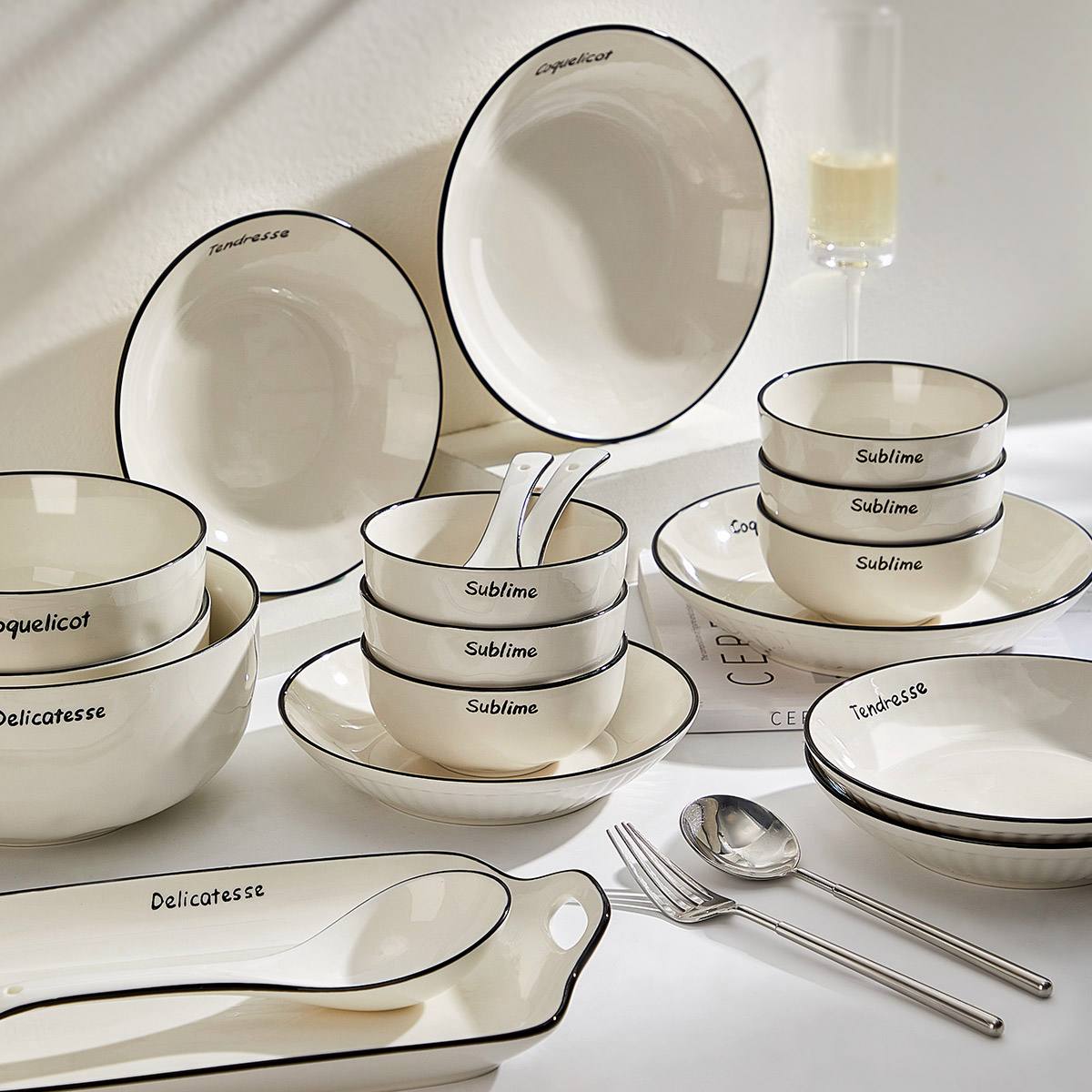
Selecting high-quality ceramic tableware is essential for ensuring both aesthetic appeal and food safety on your dining table. When choosing, it's important to consider various aspects including material, firing process, glaze, and safety. Here is an exhaustive guide on how to pick high-quality ceramic tableware:
Ceramic tableware is primarily made from materials such as clay, kaolin, and quartz. High-quality ceramic tableware usually uses pure and fine raw materials:
Clay: Quality clay has fine particles and a uniform texture, making the finished ceramics stronger and more impact-resistant.
Kaolin: High-purity kaolin makes ceramics whiter and more translucent, making it the preferred material for high-end ceramics.
Quartz Sand: Adding an appropriate amount of quartz sand can enhance the wear resistance and structural strength of ceramics.
Firing is a crucial step in ceramic making, directly affecting the quality and functionality of the ceramics:
High-Temperature Firing: High-quality ceramic tableware is usually fired at high temperatures (generally above 1200°C). High-temperature firing makes the ceramics harder, denser, and less likely to scratch or break.
Uniform Heating: The uniformity of temperature distribution during firing determines the stability of the finished product. Uneven heating can lead to deformation or cracking of the ceramics.
Glaze not only enhances the aesthetics of ceramics but also helps protect the surface and extend its lifespan:
Lead-Free or Low-Lead Glaze: To ensure food safety, it is essential to choose ceramic tableware with lead-free or low-lead glaze. High levels of lead in glaze can be harmful to health.
Underglaze Color: Underglaze decoration involves painting the ceramic surface with colors, then covering it with a transparent glaze and firing it again. This decoration method is durable, with vivid and lasting colors.
Checking the integrity and craftsmanship details of ceramic tableware is also very important:
Flawless: High-quality ceramics should have a smooth surface without cracks, bubbles, or black spots. Edges should be even, without obvious burrs or irregularities.
Uniform Glaze: The glaze should be smooth and even, without drips, cracks, or peeling.
When purchasing, ask about or check if the product has passed relevant food safety tests, such as FDA (U.S. Food and Drug Administration) certification, to ensure safety when the tableware comes into contact with food.
By examining these details, you can choose ceramic tableware that is both safe and beautiful, adding elegance and comfort to your dining table. When purchasing, it is advisable to choose well-reputed brands and reliable sales channels to ensure the quality and after-sales service of the ceramic tableware.